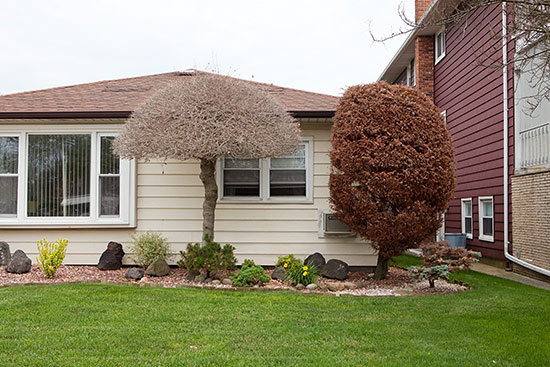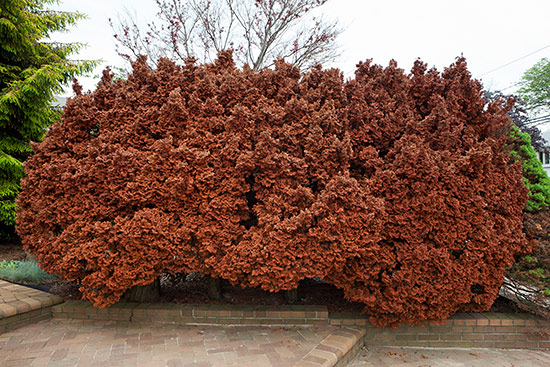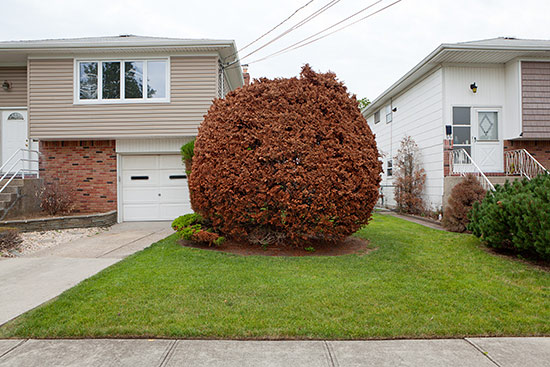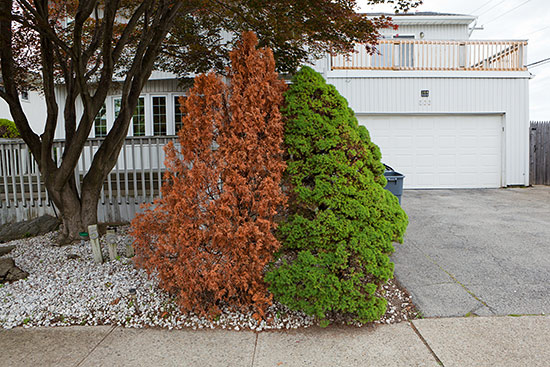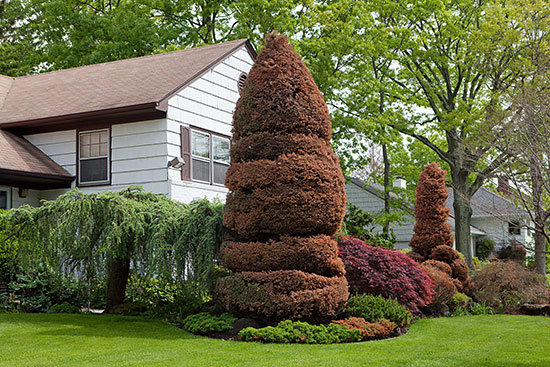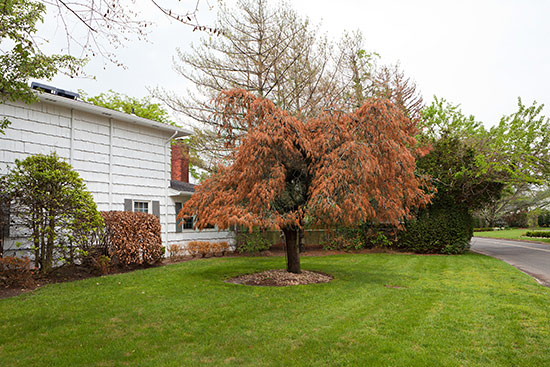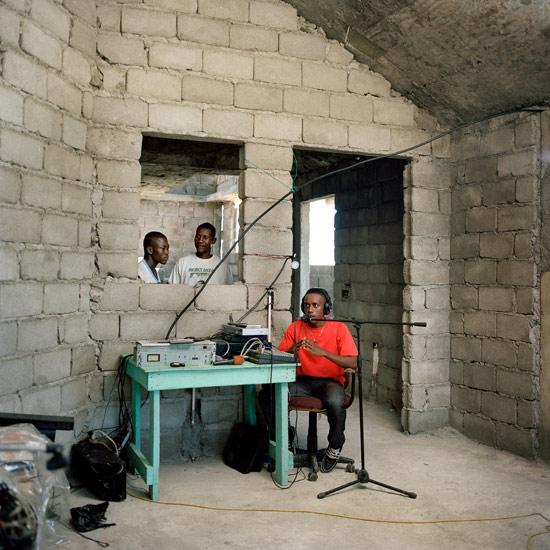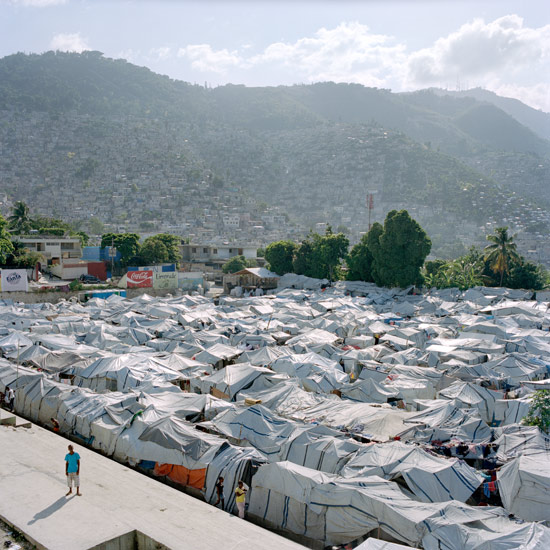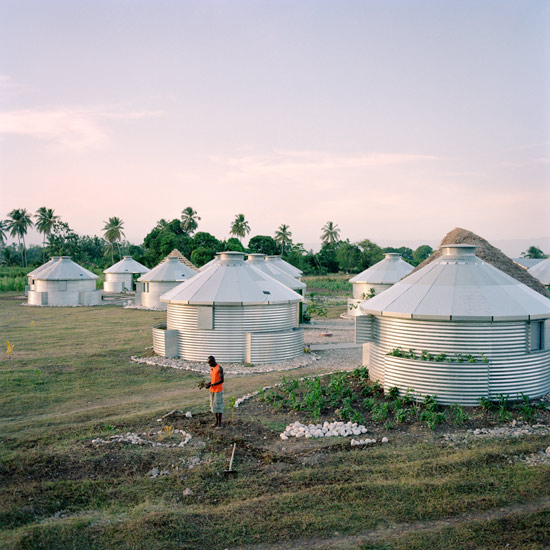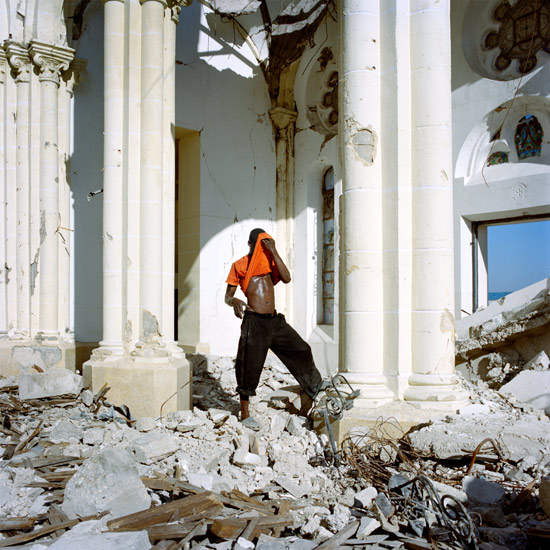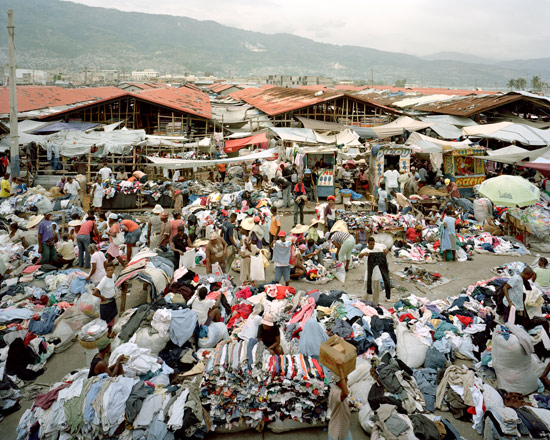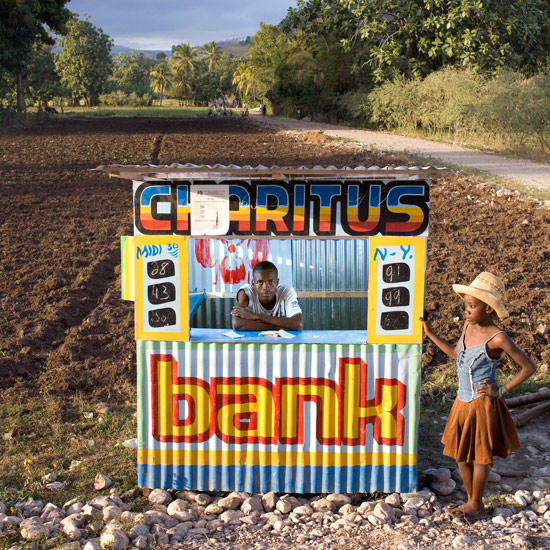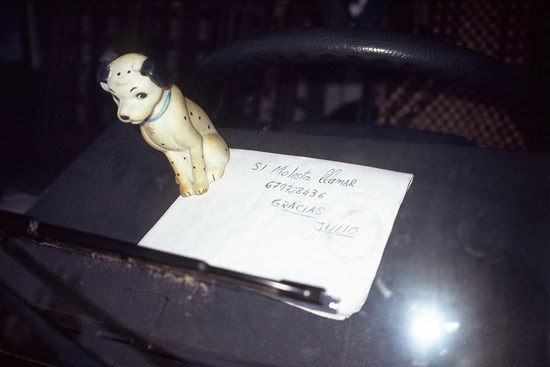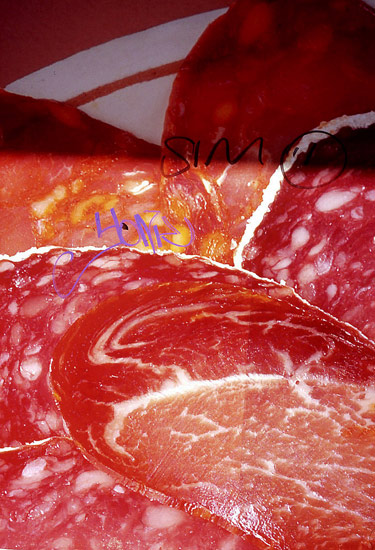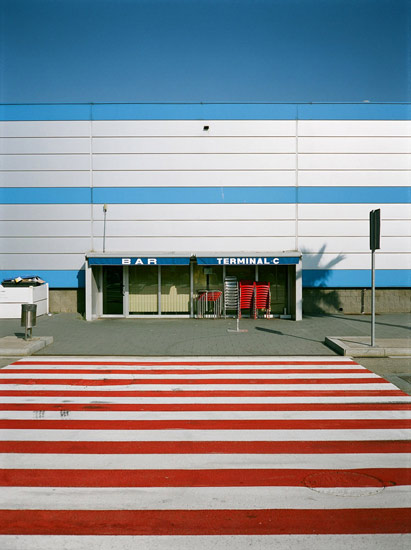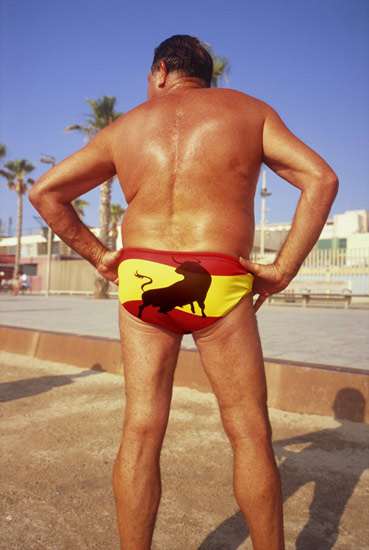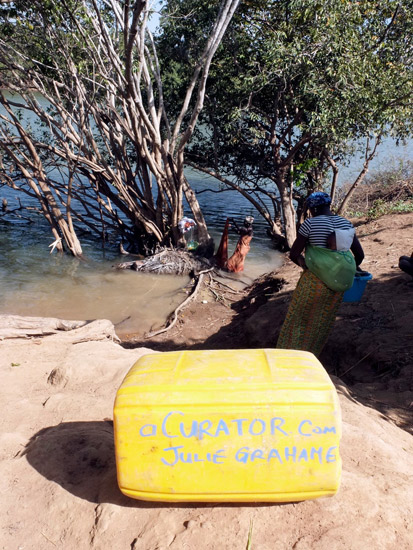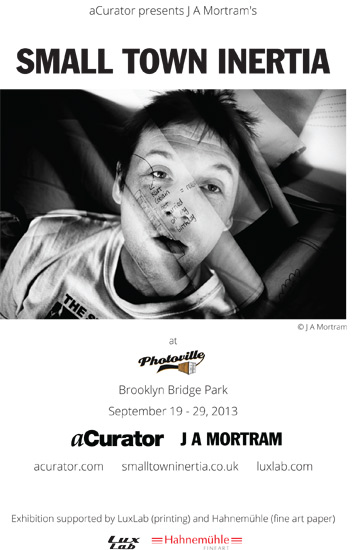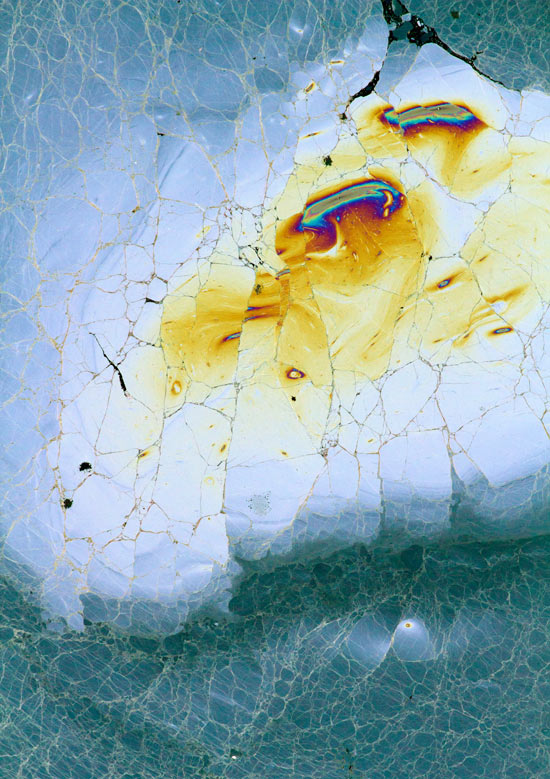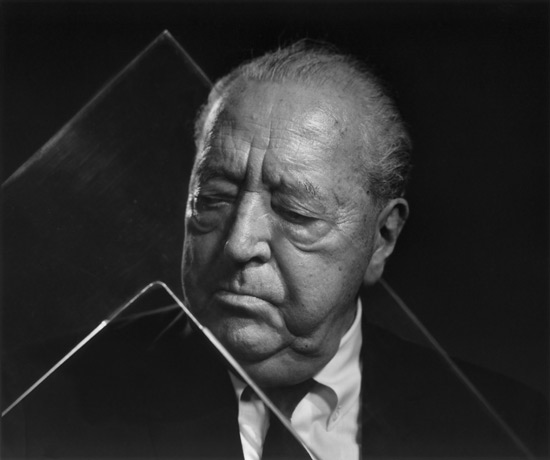A photographer attempts to lessen the horrendous stench of Yellowstone National Park's thermal vents by making beautiful images of them.
"My daughter and I took a road trip out to Yellowstone in May of 2012, hoping to see some wolves. We saw bison, elk, deer, antelope, moose, mountain goats, coyotes, black bears, grizzly bears, all up close, but only one very fleeting glimpse of a pair of wolves several hundred yards away."
"Yellowstone is a unique place; a microcosm so rich and varied that pictures can't possibly do it justice. The thermal features are other-worldly - the sight of elk and bison at sunrise, picking their way through fields of rock and vegetation, punctuated by steaming thermal vents, patches of snow, and divided by impossibly lurid streams and pools, completely oblivious to our presence, was something I'll never forget. The contrast between the hyper-saturated colors of both the water and the stream beds, and the sometimes overpowering, acrid stench of the gas escaping from thermal vents was what moved me to take these pictures. In my mind, somehow they balanced each other out."
Editor's note: The government of the USA "shut down" today; they make up for the stench you'll miss by not being able to go Yellowstone National Park while Dave's photos make up for the beauty.
Long Island resident
Laura Glabman's project reminds us of the devastation caused by Superstorm Sandy, in the shape of dead trees. She says: "'The Spring After The Storm' is a continuation of my 'Neighborhood Investigations' series where I look towards the familiar to find the groundwork for my shooting sprees. It takes years of gardening, pruning, and shaping to create and maintain the identity of a neighborhood. In one day, this foundation of hopes and dreams was swept away in the flood waters of the hurricane."
"The dead trees appear everywhere in the neighborhood. Homeowners, who had to deal with repairing and replacing the contents of their homes, had no choice but to put fixing the exterior of their properties on hold as they recover their living space. It's been almost a year since the storm, and still my neighborhood has yet to fully recover. These photographs provide testimony that as with the change of seasons, there is hope for renewal but it will take a very long time."
There are Kickstarter campaigns that leave a person so disinterested, you have to wonder why the pleaders are wasting their time. Then there are brilliant, engaging people like young photography master
Nick Brandreth. Nick is the Historic Process Specialist at
George Eastman House International Museum of Photography and Film and he is setting out to photograph areas in New York State that will be irreparably changed by fracking. I'll let him make the pitch:
"Far too often, energy companies have been responsible for crippling the delicate balance of our natural world... drilling and mining in extremely sensitive ecosystems has been done with little care for the environment and the people inhabiting these areas. It's been argued that fracking will help bring financial stimulus into struggling areas of the country; however, recent history has demonstrated the short shortsightedness of this approach. The initial capital gain is a stark contrast to a painful crash that renders an area worse off than it was before. Economics and damage to the soil aside, fracking also affects well water and consequently animal and, ultimately, human life. With this project I hope to join the ranks of concerned citizens who are taking a stand to help protect our natural resources and the people of New York State.
"Over the next eight months I will create a body of work that will stand as a historical document of the landscape. All photographers create their work with the camera, but for this important work I will actually be making my own gelatin based photographic plates and final prints. For the past year I have been studying and perfecting my skills in dry plate making. Using natural gelatins, silver nitrate and bromides I will make my own emulsions, and coat glass plates negatives using dry plate technology popularized by the Eastman Dry Plate Company [know afterwards as Eastman Kodak Company] in the 1880s."
Chimney Bluffs © Nick Brandreth
Opening on Thursday at
Proud Chelsea in London is a wonderful-looking exhibition, 'Jacques Lowe: My Kennedy Years.' The exhibition is drawn from the Estate of Jacques Lowe's special collection of vintage and modern fine art prints, all printed and signed by Lowe prior to his death, and is curated by my dear friend, photographer and curator,
Emma Blau.
"To commemorate the 50th anniversary of JFK's death, Proud Chelsea is pleased to announce 'Jacques Lowe: My Kennedy Years,' a personal and intimate collection of photographs of the Kennedy family.
"When he was only 28, Jacques Lowe became JFK's presidential campaign photographer and later, personal photographer to the President. This gave Lowe unprecedented access to the personal and professional life of one of the most iconic leaders of the 20th Century. He took over 40,000 photographs of JFK at work and with his family, showing both the public and private man. These images established the Camelot myth in the popular imagination and shaped the public's perception of the whole Kennedy family. This exhibition of Jacques Lowe's photographs helps recount the story of these mythical years and a president who, in Lowe's own words, "empowered each one of us to believe we could make a difference".
See my
previous post about Jacques Lowe, and the effort to digitize his work using contact sheets after his negatives were lost in the collapse of the World Trade Center.
Julio Jean Pierre, a host on Télévision Nationale d'Haïti (TNH), being made up a few minutes before going on air. Behind him, a bust of Alexandre Pétion, president of the Haitian Republic from 1806 until his death in 1818, one of the fathers of the nation.
I am happy to publish a selection of images from World Press Photo award winner and
INSTITUTE artist, Paolo Woods. "With journalist Arnaud Robert, he tracked down Haitian society's
invisibles, its absurd flaws and hidden aspects. He investigated the
economic elites, NGOs, the profusion of FM radios, American evangelists.
Month after month, he came to realize that all the substitution powers
that had come to save Haiti were actually replacing Haitian authorities.
And yet, in a country whose leaders have failed ever since it was
founded, the population's desire for a State remains unaltered."
This colourful, insightful long-term project on the situation in Woods' adopted home of Haiti has been collected into a book to be published by
Photosyntheses this month. Woods will exhibit at
Photoville 2013 in Brooklyn, NY (September 19-29), and for three months at the
Musée Elysée, Lausanne, opening September 20.
Can't make it? Enjoy this selection.
Radio Lumiere 90.9 FM. This is one of the oldest protestant radios. It has stations all over the country and is financed by the American and German Baptiste churches. Pastor Emile Alnève has just read from the Bible and is about to lead the listeners in prayer.
Radio Paradis 92.3FM. William is spinning from a building still under construction a few meters from the sea in the village of Tiburon, while his friends have come to check on him. The equipment for the radio has been paid by a 'Diaspora' - a Haitian living in the US. The radio is powered by solar panels and broadcasts ten hours a day.
The construction of 3,000 houses, 15 kilometers north of Port-au-Prince. The project, whose cost is evaluated at $44 million, is managed by the government and financed by the Venezuelan 'Petro Caribe' fund. Morne à Cabri.
Tent city on a soccer field that belongs to a church. After the earthquake, inhabitants of makeshift districts (Jalousie, seen in the background) sometimes pitched tents in the camps to benefit from NGO help. The most visible camps in public squares were dismantled. Pétion-Ville.
The American religious organization Global Compassion Network supplies houses built from grain silos, a gift of the Monsanto company. Torbek.
In Port-au-Prince's Notre Dame Cathedral, a man looks for iron to recycle from the ruins of the earthquake.
A game of dominos among police officers who are in charge of the security for the president. The losers of the game are designated as 'dogs' and forced to wear something that attracts the ridicule of passersby. Here, they are tied together with electric wire. Presidential Palace, Port-au-Prince.
The Croix-des-Bossales Market, where pèpès, second-hand clothing from the United States, is sorted, resized and sold wholesale. Port-au-Prince.
Mario Andrésol, though he left the Haitian National Police, still enjoys continuous protection supplied by the Ministry of the Interior. Belleville, Pétion-Ville.
Eric Jean-Baptiste, owner of Père Eternel, Haiti's second biggest lottery. Lottery, or Borlette as it is called in Haiti, is ubiquitous in the country and according to one estimate Haitians spend as much as $1.5 billion per year on the Borlette making it the biggest industry in the country. The son of one of Papa Doc's Tonton Macoutes, Jean-Baptiste has utter contempt for the mulatto elite that rules the core of the Haitian economy. Port au Prince.
Michel Joseph Martelly in front of the presidential palace destroyed by the January 12, 2010, earthquake. Port-au-Prince.
A borlette office. Haitians invest two billion dollars every year in these private lotteries - nearly a quarter of the GNP. They are often referred to as "banks" since the poor invest their money in them. Camp Perrin.
Special thanks to Anna-Maria Pfab, Cultural Manager, INSTITUTE
Jason Florio and Helen Jones had completed a trip on foot around the perimeter of The Gambia in 2009 and had resolved to make another, this time following the source of the River Gambia through three countries - Guinea, Senegal and The Republic of The Gambia - to the Atlantic Ocean. Inspired by Scottish explorer, Mungo Park, who made trips to West Africa in the late 1700's, they resolved to find a way to fund a two to three month photographic expedition and document the communities living along the River whose lives rely upon it. To create "[a] modern-day account of the people, societies, and life along the length of one of Africa's last, free-flowing, major rivers. There has been talk of damming the river. This journey will also be about the impact to the communities, and the environmental impact of damming."
"23rd November, 2012 - 21st January, 2013, after 400km overland in the Fouta Djallon Highlands of Guinea-Conakry into Senegal and then putting our two canoes into the water in Kedougou - we paddled (no engine!) over 700km of the River Gambia to its end, at the Atlantic Ocean in Banjul, The Gambia."
Sponsors received regular updates during the trip, including thanks along the way and the promise of great print-rewards! The trip was a huge success as you will see.
Inspiring!
Prints from the expedition will be on-view at
Photoville, in Brooklyn Bridge Park, September 19 - 29, 2013.
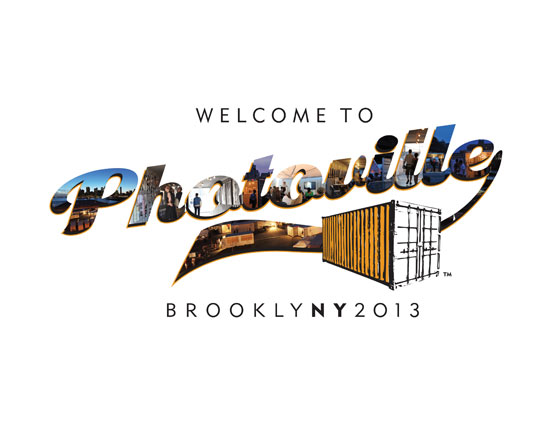
Last year's Photoville was impressive, and loads of fun, and this year it promises to be even better. There are dozens of talks and workshops, exhibitions and projections, representing 260 artists.
I will be presenting the photography of two subjects from social documentary photographer J A Mortram's series Small Town Inertia, as well as co-presenting, along with Stella Kramer: Personal Projects, Long-term Commitment, and appearing, nervously, on the Future of Copyright hosted by Photoville partners Photoshelter. aCurator web designer (who is also my husband) Mike Hartley of bigflannel has courageously decided to open himself up to questions in an hour-long session titled Ask A Web Designer. Another mention must go to Carl Saytor of Luxlab who is not only generously supporting the production of Small Town Inertia, but is hosting a self-curated group show, Rebels. Last for my incestuous list is River Gambia: a 1044 km African Odyssey wherein photographer Jason Florio and producer and curator Helen Jones-Florio take us to the source of the River Gambia and through three countries to where it meets the ocean, in a compelling, crowd-funded expedition.
There's loads more happening so if you're remotely local, have a good look through the listings on the Photoville website. Photoville is FREE to the public. Spread the word and we'll see you there! Brooklyn Bridge Park, September 19 - 29, 2013.
This portrait of Mies van der Rohe was made during the first photo shoot that the newly-married Estrellita Karsh attended, in 1962. She talks about how she watched Mr. Karsh take the "imposing buddha in a wheelchair" to a corner in the architect's Bauhaus home for a quiet conversation, seeing a relationship develop, as if "a doctor with a patient." Mrs Karsh tells this story in an article for French magazine 'Beaux-Arts,' to be published in conjunction with a major exhibition at the
Mona Bismarck American Center for art and culture, in October.
"The exhibition at the Mona Bismarck American Center for art & culture will reunite approximately seventy of the photographer's most striking portraits of French and American dignitaries and luminaries, juxtaposing Frank Lloyd Wright with Le Corbusier, for example, and Charles de Gaulle with Dwight Eisenhower. Original photographs will be presented alongside archival material from the dozens of Life and Paris-Match covers that Karsh captured, marking the transformation of his intimate portraits into public icons."
"In celebration of a major gift to its collection of more than 100 portraits created by renowned photographer Yousuf Karsh (1908-2002), the National Portrait Gallery will present the exhibition Yousuf Karsh: American Portraits. Opening November 1, 2013, this exhibition will feature iconic photographs of Americans who have distinguished themselves in fields as diverse as business, medicine, entertainment, politics, and the arts. Among the portraits to be included will be those of artist Georgia O'Keeffe, physician and virologist Jonas Salk, singer Marian Anderson, actress Grace Kelly, businesswoman Elizabeth Arden, architect I.M. Pei, and first lady Eleanor Roosevelt. Yousuf Karsh: American Portraits will be the museum's first exhibition devoted entirely to the work of this internationally recognized portrait photographer."


